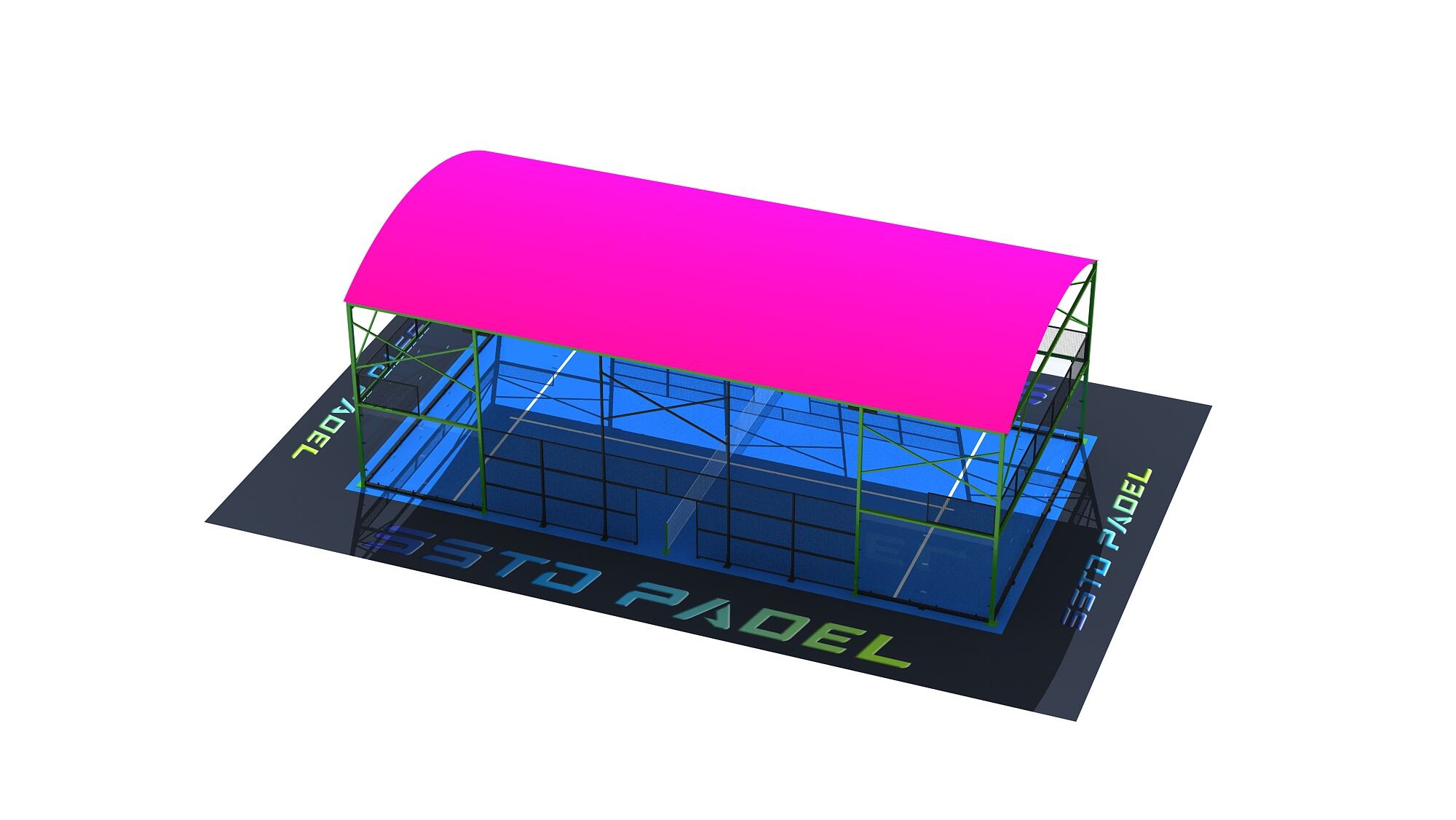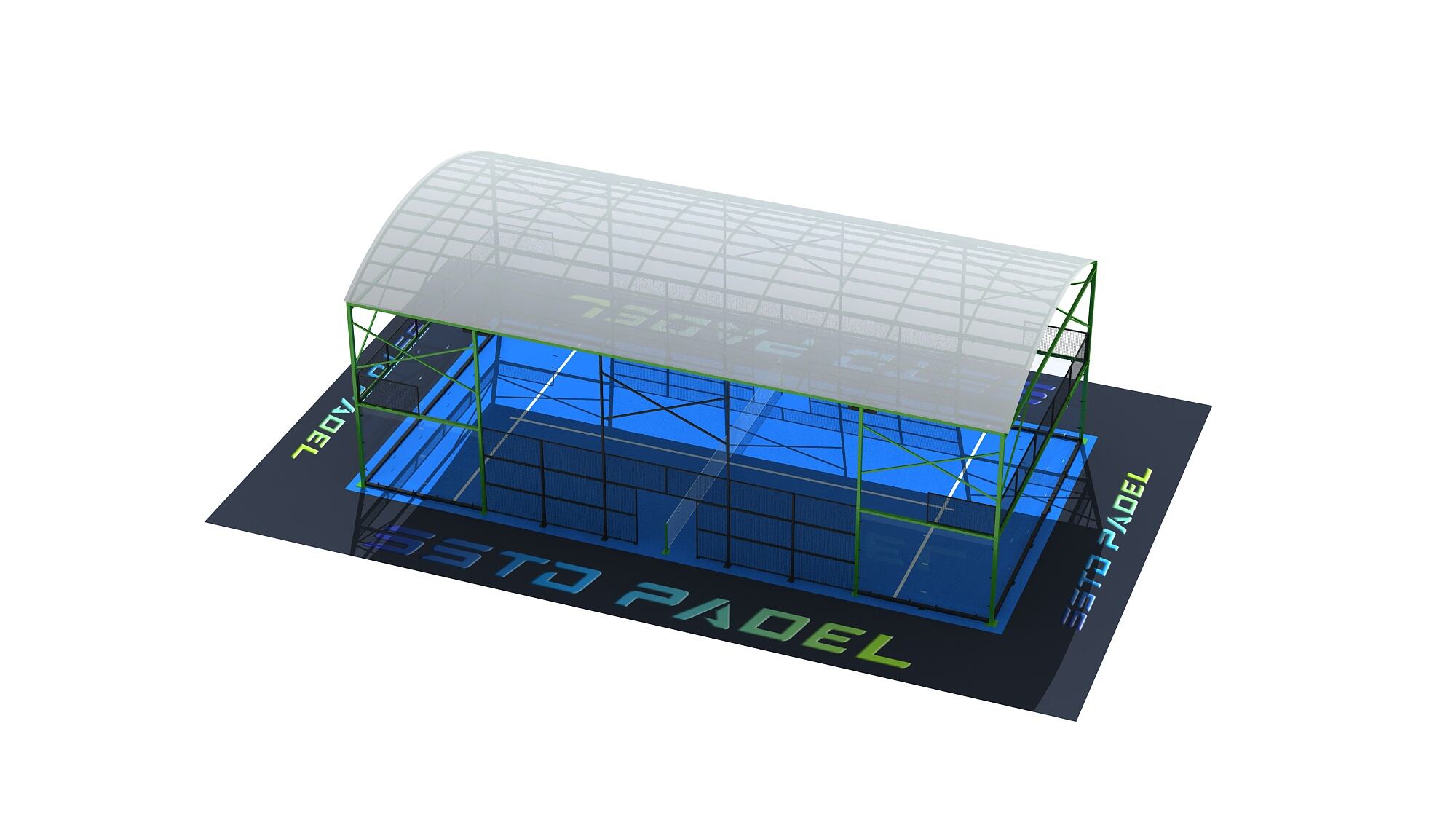현대 패들 시설의 진화
최근 전 세계적으로 패들(padel)의 인기가 급속히 증가함에 따라, 우수한 경기 시설에 대한 수요가 경기장 설계의 획기적인 혁신을 이끌어내고 있습니다. 이러한 변화의 선두에는 실내 패들 코트 가 자리하고 있습니다. 이 시설은 기존의 야외 코트를 뛰어넘는 완전히 새로운 경기 환경을 제공하는 혁신적인 개발로, 건축적 창의성과 운동 경기의 기능성이 완벽하게 융합된 결과입니다.
그 실내 패들 코트 개념은 선수들이 외부 조건과 관계없이 기량을 완성할 수 있는 통제된 환경을 창출함으로써 패들 스포츠에 혁신을 가져다왔습니다. 이러한 발전은 경기 경험을 향상시키는 동시에 연중 내내 훈련과 경기를 할 수 있는 가능성을 열어주었으며, 패들이 틈새 종목에서 주류 스포츠로 발전하는 과정에서 중요한 이정표가 되었습니다.

날씨 보호 및 연중 활용 가능성
악천후로부터 보호
지붕이 있는 패들 코트의 가장 큰 장점 중 하나는 자연의 요소로부터 완벽하게 보호받을 수 있다는 점입니다. 비, 눈, 강한 햇빛은 더 이상 경기를 방해하는 장애물이 되지 않습니다. 신중하게 설계된 지붕 구조를 통해 선수들은 날씨로 인한 방해 없이 훈련 일정과 경기 일정을 그대로 유지할 수 있어 취미로 즐기는 플레이어와 전문 선수 모두에게 귀중한 자산이 되고 있습니다.
덮개 구조는 무더운 여름철에 필수적인 그늘을 제공하여 과열을 방지하고 햇빛과 관련된 건강 문제의 위험을 줄입니다. 이러한 보호 기능은 참여자가 환경적 요인과 싸우는 대신 자신의 경기력에 온전히 집중할 수 있는 보다 쾌적한 경기 환경을 조성합니다.
연장된 경기 시간과 계절
덮개가 설치된 패들 코트는 연간 실제 사용 가능한 경기 시간을 획기적으로 늘려줍니다. 이제 겨울철이라 해서 패들 활동을 중단할 필요가 없으며, 야간 세션도 낮 시간대와 마찬가지로 이용이 가능해집니다. 이러한 이용 가능성의 증가는 보다 일관된 훈련 기회를 제공하며 시설 소유자에게 더 나은 투자 수익률을 가져다줍니다.
더욱이 사계절 내내 플레이할 수 있는 능력은 계절적 중단 없이 선수들의 동력 유지와 기술 발전에 도움을 줍니다. 이러한 지속성은 경쟁적인 선수들에게 특히 소중한데, 이는 달력의 월에 관계없이 최고 수준의 성과를 유지해야 하기 때문입니다.
향상된 플레이 경험과 성과
최적의 조명 조건
지붕이 있는 패들 코트는 종종 일관되고 눈부심 없는 조명을 경기 공간 전반에 제공하는 정교한 조명 시스템을 갖추고 있습니다. 이러한 통제된 조명 환경은 햇빛 눈부심이나 그림자와 같은 자연광 조건의 변화로 인한 문제를 해소해 주며, 이는 선수들의 경기력과 즐거움에 상당한 영향을 줄 수 있습니다.
조명 장치의 전략적 배치는 코트 전체에 균일한 가시성을 보장하여 선수들이 공을 보다 효과적으로 추적하고 정밀한 샷을 할 수 있게 합니다. 이러한 향상된 가시성은 경기의 질을 개선할 뿐만 아니라 어두운 조건으로 인한 사고 위험도 줄여줍니다.
온도 및 바람 조절
오픈된 코트에 비해 지붕이 있는 패들 코트는 온도 조절 기능이 뛰어납니다. 지붕 구조는 보다 안정적인 실내 온도를 유지시켜 주며, 선수들이 극심한 더위나 추위로부터 보호받을 수 있도록 해줍니다. 이러한 온도 조절은 보다 쾌적한 경기 환경을 조성해주며, 날씨로 인한 피로나 불편함을 방지하는 데 도움이 됩니다.
바람 간섭은 야외 코트에서 흔히 겪는 문제이지만, 지붕이 있는 시설에서는 이러한 요소가 크게 줄어듭니다. 통제된 환경은 보다 정밀한 볼 컨트롤과 샷 실행을 가능하게 하여, 선수들이 예측할 수 없는 바람의 영향을 보완하는 대신 기술과 전략에 집중할 수 있게 해줍니다.
유지 보수 및 수명 혜택
보호된 코트 표면
덮개 구조는 날씨로 인한 마모와 손상을 방지함으로써 코트 표면의 수명을 크게 연장시킵니다. 비, 눈, 직사광선은 시간이 지남에 따라 코트 재질에 상당한 손상을 줄 수 있지만, 덮개가 있는 시설은 이러한 영향을 최소화하여 유지 비용을 절감하고 주요 수리나 교체 사이의 기간을 늘어나게 합니다.
보호된 환경은 또한 잔해와 환경 오염물질이 코트 표면에 쌓일 가능성이 낮아지기 때문에 청소 빈도 또한 줄일 수 있습니다. 유지 관리 요구 사항의 이러한 감소를 통해 시설 관리자는 더 많은 경기 시간과 더 낮은 운영 비용을 확보할 수 있습니다.
장비 보호
경기 장비와 코트 액세서리는 지붕이 있는 패들 코트의 안전한 환경에서 이점을 얻습니다. 네트, 공, 기타 코트 장비는 풍화와 손상이 적어 수명이 연장되고 교체 비용이 절감됩니다. 또한, 이러한 보호는 고품질 장비가 제공하는 최적의 경기 환경을 유지하는 데에도 도움이 됩니다.
지붕이 있는 구조물은 장비 보관을 위한 편리한 솔루션도 제공합니다. 장비를 도난이나 낙서, 파손 등의 위험으로부터 보호하면서도 플레이어들이 쉽게 접근할 수 있도록 해줍니다. 안전한 이 환경은 귀중한 놀이 장비의 완전성과 내구성을 유지하는 데 기여합니다.
경제적 및 사회적 이점
시설 가치 증가
커버형 패들 코트를 설치하는 것은 모든 스포츠 시설 인프라에 상당한 개선을 가져옵니다. 사계절 이용이 가능하고 유지보수 비용이 적다는 점은 잠재적 회원이나 고객에게 매력적인 요소가 되어 회원 수와 시설 수익을 증대시킬 수 있습니다. 커버형 코트에서 제공하는 고품질의 경기 환경은 종종 높은 예약 요금을 정당화하며, 이는 투자 회수 기간을 단축시키는 데 기여할 수 있습니다.
커버형 패들 코트를 추가함으로써 부동산 가치 또한 향상될 수 있습니다. 이러한 코트는 현대적이고 기상 조건에 영향을 받지 않는 스포츠 편의시설로서 현재 및 미래 시설 소유자 모두에게 어필하는 요소입니다. 고품질 인프라에 대한 이러한 투자는 스포츠 시설 복합단지나 클럽의 전반적인 가치 제안에 상당한 영향을 미칠 수 있습니다.
커뮤니티 형성 기회
커버형 패들 코트는 정기적인 토너먼트, 트레이닝 세션 및 사회적 행사 등을 통해 지역 사회와의 유대를 강화할 수 있는 신뢰성 있는 장소로 활용됩니다. 기상 조건에 영향을 받지 않는 이 시설들의 특성 덕분에 일관된 프로그램 운영과 일정 계획이 가능해 계절 변화와 관계없이 활발한 스포츠 커뮤니티를 구축하고 유지하는 데 기여합니다.
보호된 환경은 교습 프로그램과 청소년 육성 이니셔티브에도 이상적인 조건을 제공합니다. 수업이 기상 상황으로 인해 취소될 걱정이 없기 때문입니다. 이러한 신뢰성은 튼튼한 훈련 루틴을 정착시키고 여가 및 경쟁 수준 모두에서 패들 스포츠의 성장을 지원하는 데 도움이 됩니다.
자주 묻는 질문
커버형 패들 코트 건설에 일반적으로 사용되는 자재는 무엇입니까?
실내 패들 코트는 일반적으로 강화유리 패널이 있는 고급 강철 골조를 벽체로 사용하고, 지붕 구조에는 특수 폴리카보네이트 또는 유사한 소재를 사용합니다. 이러한 자재는 내구성, 내후성 및 자연광 투과성을 유지하면서 최적의 경기 조건을 제공할 수 있다는 점에서 선택됩니다.
실내 패들 코트 유지 관리에 드는 추가 비용은 얼마나 되나요?
실내 패들 코트에 대한 초기 투자 비용은 야외 코트보다 높지만, 기상 조건으로 인한 손해와 마모가 적어 장기적으로는 유지 관리 비용이 더 저렴한 경우가 많습니다. 정기적인 유지 관리는 주로 청소, 조명 시스템 점검 및 주기적인 구조 점검을 포함하며, 이는 야외 코트에 드는 유지 관리 비용의 일부에 불과합니다.
실내 패들 코트에 추가 기능을 개조 설치할 수 있나요?
대부분의 커버형 패들 코트 구조는 개선된 조명 시스템, 기후 조절 장치 또는 고급 배수 시스템과 같은 다양한 편의 시설로 맞춤 제작할 수 있습니다. 많은 커버형 코트 설계의 모듈식 특성은 향후 업그레이드 및 수정이 가능하게 하여 경기 경험과 시설 기능을 향상시킬 수 있습니다.

